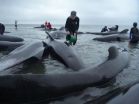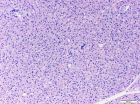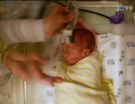(Press-News.org) When someone has a stroke, time equals brain. The longer a stroke is left untreated, the more brain tissue is lost. Since the only proven treatment — a clot-busting drug — works in less than half of patients, stroke physicians had high hopes for a mechanical device that could travel through the blocked blood vessel to retrieve or break up the clot, restoring blood flow to the brain.
But in a recently completed multi-site trial in which UCLA served as the clinical coordinating center, researchers found there was no overall recovery benefit to patients treated with clot-removal (embolectomy) devices, compared with standard post-stroke care, which includes monitoring blood pressure and ensuring the brain is receiving oxygen.
The study also found that using brain scans to identify which patients might be the best candidates for embolectomy did not lead to better outcomes for those patients.
The study was sponsored by the National Institutes of Health, and the results appeared in the March 7 edition of the New England Journal of Medicine.
Treating an acute stroke is always a race against the clock, and the first step is to immediately determine, through the use of a CT or MRI brain scan, whether the stroke is a hemorrhagic stroke, caused by a burst blood vessel, or the much more common ischemic stroke, caused by a clot blocking the flow of blood in a blood vessel.
With an ischemic stroke, the clot-dissolving drug called tissue plasminogen activator, or tPA, is approved for use within three hours of the onset of stroke symptoms. But most stroke victims don't arrive at the hospital within that time frame, and even then, tPA may simply not work. Patients who don't respond to tPA then receive standard post-stroke care, or they may be considered for an embolectomy.
The MR RESCUE (Mechanical Retrieval and REcanalization of Stroke Clots Using Embolectomy) trial sought to determine if imaging the brain to see how much stroke damage has already occurred could identify which patients might be the best candidate for this procedure.
The trial, which began in 2004 and involved 22 sites in the U.S., included 118 patients (average age 65.5) who were treated within eight hours of experiencing an ischemic stroke. All the patients underwent a CT or MRI brain-imaging scan before treatment.
Drawing on information from the scans, the investigators divided the patients into two groups. Patients with a favorable treatment pattern had only a small area of infarct (dead tissue) and a large area of threatened but salvageable brain tissue (called penumbral tissue). Patients with an unfavorable pattern already had a large area of infarct or a small area of penumbral tissue.
Patients from both of these groups were randomly assigned either to receive the standard medical treatment or to have their clot removed by the MERCI Retriever (a tiny corkscrew-like device developed at UCLA that "grabs" clots) or the Penumbra System (a device that sucks clots out). Both devices work by inserting a catheter through the patient's groin to the blocked brain artery.
The hope was that by quickly removing the clot, blood would be restored to the penumbral tissue, thereby saving it. But the results showed that the level of disability 90 days after suffering a stroke was no different between those patients who underwent the clot-removal procedure and those who received standard care. Rates of death and bleeding in the brain were also the same. In addition, there was no difference between the group in which brain scans showed significant amounts of salvageable brain tissue and those with only a small area of penumbral tissue.
"We found no data showing that imaging could help select patients for treatment, nor did we show an overall benefit of performing an intervention to physically remove the clot," said Dr. Reza Jahan, co-principal investigator for the trial, an associate professor of interventional neuroradiology and a member of the UCLA Stroke Center. "So that was disappointing. On the other hand, there are new devices that open up vessels better and faster, and with fewer complications, than the first-generation devices used in our trial."
Last March, the U.S. Food and Drug Administration approved the use of the next-generation mechanical device. Developed for ischemic stroke, in part by Jahan, the SOLITAIRE Flow Restoration Device dramatically outperformed the Merci Receiver. SOLITARE has a self-expanding, stent-like design, and once inserted into a blocked artery using a thin catheter tube, it compresses and traps the clot. The clot is then removed by withdrawing the device, reopening the blocked blood vessel.
Results of the SOLITARE study showed that the device opened blocked vessels without causing symptomatic bleeding in or around the brain in 61 percent of patients. By comparison, the older MERCI Retriever was effective in 24 percent of cases.
Jahan believes, then, that it would be premature to dismiss the value of endovascular therapy.
"The new devices do work better," he said. "Whether that will translate into improvement in outcomes is not known, and the only way to test efficacy is by doing a controlled trial."
###
There were multiple authors on the study, including UCLA's Jeffrey Gornbein, Jeffry R. Alger, Val Nenov and senior author Jeffrey Saver, director of the UCLA Stroke Center and a professor of neurology. Please see the paper for other authors and conflict-of-interest statements.
The UCLA Stroke Center, recognized as one of the world's leading centers for the management of cerebral vascular disease, treats simple and complex vascular disorders by incorporating recent developments in emergency medicine, stroke neurology, microneurosurgery, interventional neuroradiology, stereotactic radiology, neurointensive care, neuroanesthesiology and rehabilitation neurology. The program is unique in its ability to integrate clinical and research activities across multiple disciplines and departments. Founded in 1994, the UCLA Stroke Center is designated as a certified Primary Stroke Center by the national Joint Commission on Accreditation of Healthcare Organizations.
For more news, visit the UCLA Newsroom and follow us on Twitter.
UCLA-led study finds devices no better than meds in recovery from clot-caused strokes
2013-03-14
ELSE PRESS RELEASES FROM THIS DATE:
ASU scholars advocate innovation in regulatory, payment pathways for personalized medicine
2013-03-14
Two innovative programs designed to improve the availability of emerging medical technologies that can help patients receive more effective, efficient and personalized health care are advanced in a commentary written by a team of scientists and policy experts, including seven from Arizona State University, and published today in Science Translational Medicine.
The March 13 article, "Regulatory and Reimbursement Innovation," explores the benefits of coverage with evidence development (CED) and parallel review for the regulation and reimbursement of molecular diagnostics. ...
EASL calls on UK to tackle alcohol consumption problem through implementation of minimum pricing
2013-03-14
Geneva, 13th March 2013 --- According to WHO, liver cirrhosis accounts for 1.8% (i.e. 170,000) of all deaths in Europe. In recent years liver cirrhosis has become a serious health threat in some Western European countries such as Ireland and the United Kingdom, where over the last 10 years the associated mortality has increased .
The European Association for the Study of the Liver (EASL) urges the UK government to press ahead with its proposed implementation of the minimum unit pricing of alcohol. EASL's most recent publication The burden of liver disease in Europe: ...
Study: Probiotics reduce stress-induced intestinal flare-ups
2013-03-14
ANN ARBOR, Mich. – For those with irritable bowel syndrome who wonder if stress aggravates their intestinal disorder, a new University of Michigan Health System study shows it's not all in their head.
Researchers revealed that while stress does not cause IBS, it does alter brain-gut interactions and induces the intestinal inflammation that often leads to severe or chronic belly pain, loss of appetite and diarrhea.
Stress has a way of suppressing an important component called an inflammasome which is needed to maintain normal gut microbiota, but probiotics reversed ...
Oh mother, where art thou?
2013-03-14
Biologists since Aristotle have puzzled over the reasons for mass strandings of whales and dolphins, in which groups of up to several hundred individuals drive themselves up onto a beach, apparently intentionally. Recent genetic research has shed some light on whether family relationships play a role in these enigmatic and often fatal beachings of otherwise healthy whales.
One hypothesis regarding the reason for strandings is that "care-giving behavior," mediated largely by family relationships, plays a critical role. In this scenario, the stranding of one or a few whales, ...
Transplanted brain cells in monkeys light up personalized therapy
2013-03-14
MADISON — For the first time, scientists have transplanted neural cells derived from a monkey's skin into its brain and watched the cells develop into several types of mature brain cells, according to the authors of a new study in Cell Reports. After six months, the cells looked entirely normal, and were only detectable because they initially were tagged with a fluorescent protein.
Because the cells were derived from adult cells in each monkey's skin, the experiment is a proof-of-principle for the concept of personalized medicine, where treatments are designed for each ...
Study questions the role of kinship in mass strandings of pilot whales
2013-03-14
NEWPORT, Ore. – Pilot whales that have died in mass strandings in New Zealand and Australia included many unrelated individuals at each event, a new study concludes, challenging a popular assumption that whales follow each other onto the beach and to almost certain death because of familial ties.
Using genetic samples from individuals in large strandings, scientists have determined that both related and unrelated individuals were scattered along the beaches – and that the bodies of mothers and young calves were often separated by large distances.
Results of the study ...
Knowing how brown fat cells develop may help fight obesity
2013-03-14
PHILADELPHIA - Brown fat is a hot topic, pardon the pun. Brown fats cells, as opposed to white fat cells, make heat for the body, and are thought to have evolved to help mammals cope with the cold. But, their role in generating warmth might also be applied to coping with obesity and diabetes.
The lab of Patrick Seale, PhD, at the Perelman School of Medicine, University of Pennsylvania, studies what proteins guide the development, differentiation, and function of fat cells. Seale and postdoctoral fellow Sona Rajakumari, PhD, along with Jun Wu from the Dana-Farber Cancer ...
Social bees mark dangerous flowers with chemical signals
2013-03-14
Scientists already knew that some social bee species warn their conspecifics when detecting the presence of a predator near their hive, which in turn causes an attack response to the possible predator. Researchers at the University of Tours (France) in collaboration with the Experimental Station of Arid Zones of Almeria (Spain) have now demonstrated that they also use chemical signals to mark those flowers where they have previously been attacked.
Researchers at the University of Tours (France) and the Experimental Station of Arid Zones of Almeria (EEZA-CSIC) conducted ...
23andMe identifies multiple genetic factors impacting development of nearsightedness
2013-03-14
Mountain View, Calif. – March 14, 2013 – In the largest ever genome-wide association study on myopia, 23andMe, the leading personal genetics company, identified 20 new genetic associations for myopia, or nearsightedness. The company also replicated two known associations in the study, which was specific to individuals of European ancestry. The study included an analysis of genetic data and survey responses from more than 50,000 23andMe customers and demonstrates that the genetic basis of myopia is complex and affected by multiple genes.
Myopia is the most common eye ...
New early warning system for the brain development of babies published in video journal
2013-03-14
A new research technique, pioneered by Dr. Maria Angela Franceschini, will be published in JoVE (Journal of Visualized Experiments) on March 14th. Researchers at Massachusetts General Hospital and Harvard Medical School have developed a non-invasive optical measurement system to monitor neonatal brain activity via cerebral metabolism and blood flow.
Of the nearly four million children born in the United States each year, 12% are born preterm, 8% are born with low birth weight, and 1-2% of infants are at risk for death associated with respiratory distress. The result ...



